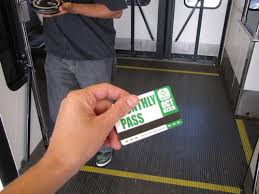 Check out any recruitment, talent management or human resources Twitter feed or blog these days and what is one of the most commonly expressed themes? How hard it is for companies, organizations and firms to find and attract the right people. Sure, there are bright people with the perfect backgrounds out there, but so often, organizations cannot lure these people in for an interview. Requisitions for new positions are left open for months at a time and often, the work specified in those jobs is absorbed into another role.
Check out any recruitment, talent management or human resources Twitter feed or blog these days and what is one of the most commonly expressed themes? How hard it is for companies, organizations and firms to find and attract the right people. Sure, there are bright people with the perfect backgrounds out there, but so often, organizations cannot lure these people in for an interview. Requisitions for new positions are left open for months at a time and often, the work specified in those jobs is absorbed into another role.
I certainly don’t know enough about recruitment or human resources to comment on how to solve that problem, but what I can do is offer a solution that would help companies and organizations attract the best and the brightest. Incentivize your employees’ commute. That’s right, make it accessible, easy and affordable for your employees to get to work.
The concept of offering commuter benefits began 30 years ago when Congress enacted the Tax Reform Act of 1984, allowing workers to defray public transportation costs through their employers’ benefit packages.
In 1998, Congress amended the tax code to allow workers to use pre-tax dollars to pay for their transit/vanpool and parking costs when it applied to their commute. In 2009, Congress set a $230 monthly tax-free cap on the transit/vanpool benefit, establishing parity between that and the parking benefit. A $20/month pre-tax benefit for bicycling was added in 2009, also.
In 2014, the cap on tax-free benefits for transit/vanpool was reduced to $130 per month. While not ideal, it still incentivizes the use of public transportation as a means for commuting to work. In fact, the transit benefit is one of the most popular of the voluntary benefits that employees say they appreciate most—ranked highly on the list of “fringe” benefits such as healthcare and savings for retirement.
If that’s not enough to inspire a commuter incentive program, how does saving money on payroll taxes sound? That’s right— employers are not required to pay taxes on money that is given to their employees pre-tax. That means that employers can save up to 7.65% on payroll taxes when they offer pre-tax commuter benefits to their employees. Moreover, employees can save up to 40% on their commuting costs through a commuter benefits program. That sounds like a win-win to me!
Options for commuter benefits may include:
A tax-free benefit financed by the employer that pays directly for their employees’ use of transit/vanpool and/or parking costs (up to the monthly IRS allowable maximum). The value of this benefit is not added to the employee’s gross income.
A benefit that enables the employee to designate a portion of their salary before taxes to pay for transit/vanpool and/or parking expenses (up to the monthly IRS allowable maximum).
A combination of the two options outlined above, in which a portion of the commuter benefit is funded through a tax-free contribution from the employer and the remainder is funded by a pretax contribution from the employee (the sum contribution cannot exceed the monthly IRS allowable maximum).
The transportation benefit makes possible what often is not possible for workers who live in urban areas and commute to suburban locations—access. Don’t compromise on attracting the best talent because your worksite (like all North Shore TMA members’ worksites) is located in the suburbs. Offer pre-tax transit/vanpool benefits to your employees and perspective employees.
As it is often quoted from Field of Dreams, “if you build it, they will come”, I say, if you offer it, they will come to work for you.



